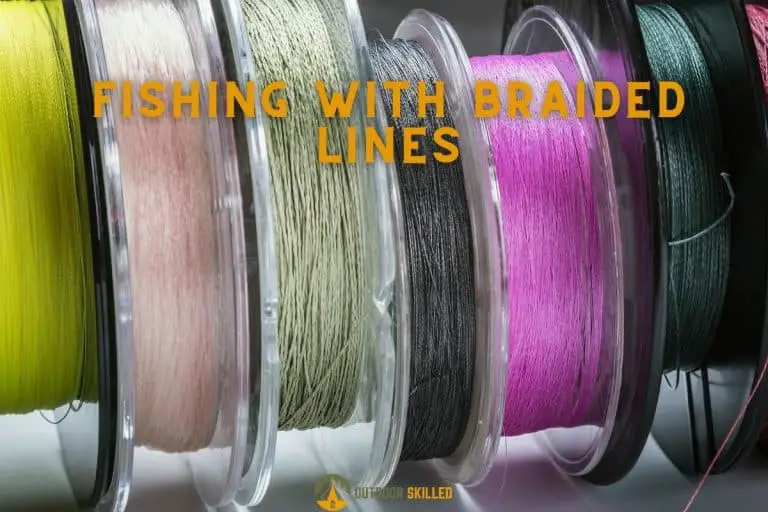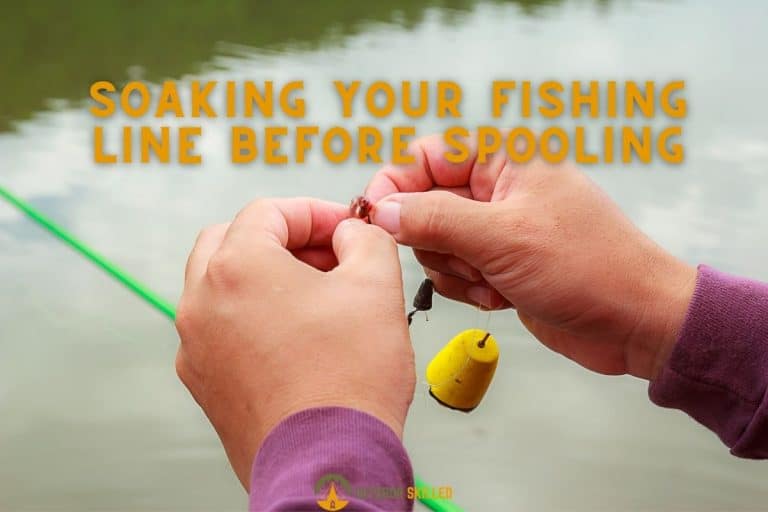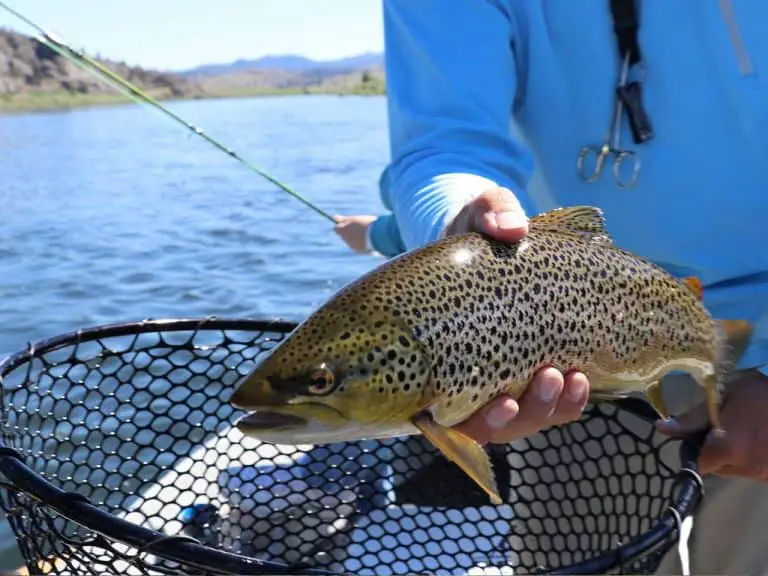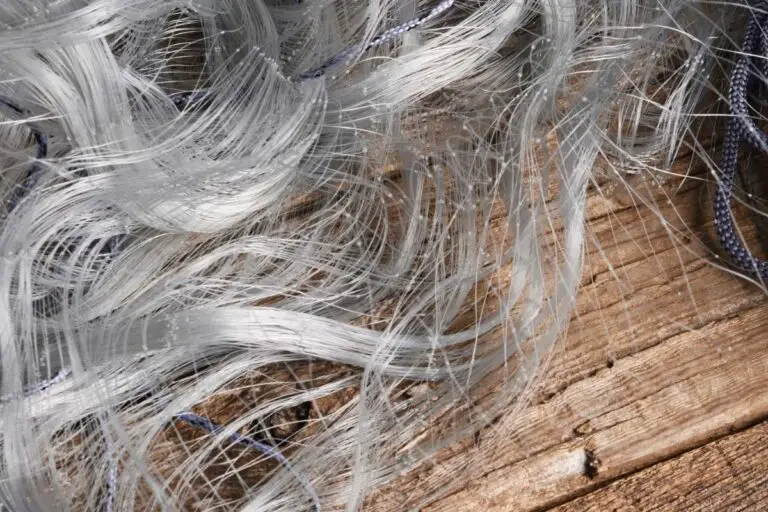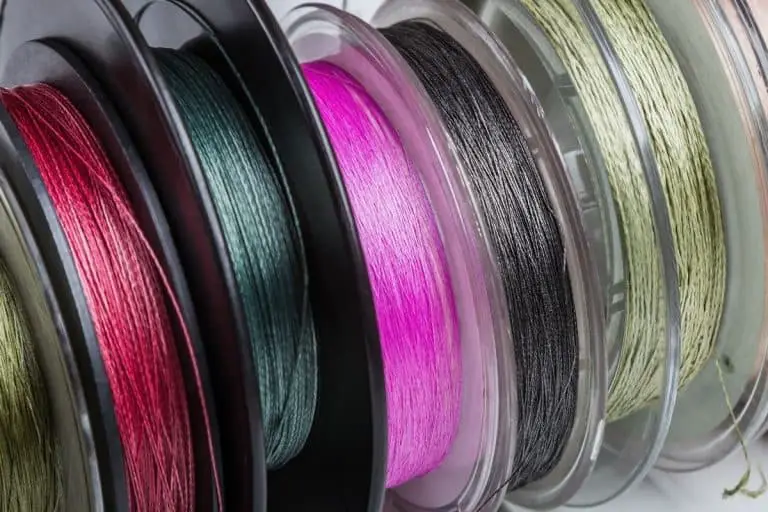Does Fluorocarbon Stretch? Here’s What You Should Know
Fluorocarbon fishing line has become a popular choice for anglers in various situations. Fluoro’s emergence is partly motivated by improvements in performance, which, depending on individual preferences, can make it an ideal fishing line for a variety of uses.
So, does Fluorocarbon stretch? Fluorocarbon lines stretch to around 10% to 25% of their length. However, they do not stretch as much as monofilament lines, and when they’re fully stretched, they will not return to their original shape.
Keep reading to find out more about Fluorocarbon line stretching!
Table of Contents
Does Fluorocarbon Stretch?

The term fluorocarbon refers to a group of compounds that includes organics containing fluorine, chlorine, and carbon, as well as synthetics derived from hydrocarbons. It has been used in manufacturing a lot of things, including Teflon and Freon.
The fluorocarbon line is produced as a thin piece, similarly to nylon monofilament; however, since the fluorocarbon molecules are more compressed, the line is larger and substantially denser than mono.
Fluorocarbon does stretch; however, it doesn’t stretch as much as monofilament lines. It also differs from mono in the matter of visibility, flexibility, and sturdiness, all of which influence how it operates in waters. You can learn about all the differences between the two types in this comparison of Fluorocarbon VS monofilament fishing lines here.
What Does the Stretch in Fluorocarbon Lines Mean for Anglers?

The fluorocarbon line is believed to have low stretch due to the nature of the materials used to manufacture it. This causes it to be sturdy with sure hook sets, even over long distances.
However, fluorocarbon fishing lines still stretch to about 10 and 25 percent of their original size, as made evident by multiple lab results.
That’s equally as great, if not better than, a few monofilaments.
In reality, the manufacturers that were constructed to be the most flexible and easy to manage are the most stretchy.
Mono VS Fluorocarbon Stretch
Numerous fishers presume Fluorocarbon to be a low-stretch line and attribute its sensitivity to this. However, it has a greater stretch than nylon monofilament.
The variation is that Fluoro stretching requires a greater amount of force, to begin with.
Another interesting thing to note is that dissimilar to monofilament, fluorocarbon lines stretch and remain stretched.
Mono’s are “elastic,” meaning that once stretched; the line returns to its normal shape when the pressure is released. When the pressure is released, however, fluorocarbons remain stretched and do not return to their original shape.
This quality perhaps contributes to the statement that it tends to produce excellent hook sets due to its lack of stretch. It does not return to its original shape after being stretched.
As a consequence, Fluoro works well as a mainline or as a leader in situations in which a limited stretch is advantageous. Due to its increased density and capacity to make direct contact due to its sinking ability, this line is particularly sensitive.
The Types of Fishing Lines and How Much They Stretch
| Fishing Line Type | Stretching Percentage |
|---|---|
| Monofilament | Up to 25% |
| Braided Fishing line | less than 3% and a little more than 5% before breaking |
| Fluorocarbon Fishing Line | Between 20% to 30% before snapping. |
Learn more about how to pick a fishing line that’s best for you here.
Why Use a Fluorocarbon Fishing Line?

- Low Visibility: One of Fluorocarbon’s most appealing features is that it is practically undetectable underwater. That’s because it doesn’t distort light traveling through the line significantly and has about the same index of refraction as water, which is important in clear water and when targeting frightened fish.
- Resistance To abrasion: Fluorocarbon’s low visibility qualities allow fishermen to utilize larger pound test lines in conditions like dense cover methods for bass. It also has excellent resistance to abrasion, and as a result, it has rapidly become a favorite of professionals when fishing heavy cover or dragging baits down the bottom.
- Sensitivity: tightly compressed particles of Fluoro carry greater energy than mono’s, allowing better transmission of information from the other back of the line, including minor bites. Fluoro sinks faster than mono, resulting in much less limp or bow between both the bait and the tip of the rod, enhancing sensitivity.
- Hooking Ability: Fluorocarbon hooksets are more firm since they have less low-end flexibility than nylon monofilament. This is particularly critical if the hook has to be pushed in at the end of a very long cast.
There are so many options to choose from in the market today, and I’ve tried most of them, which is why I’ve made this list of the best fluorocarbon fishing lines, so make sure to check this guide out if you want to get something that will be actually good value for your hard-earned money.
When and Where Should Fluorocarbon Fishing Line Be Used?
Fluorocarbon spools are ideal for a range of presentations that need low visibility, strength, hook setting force, and sensitivity.
A super line is unbeatable if near-zero stretch and ultra-thin line widths are important to the presentation. A fluorocarbon leader, on the other hand, considerably decreases the risk of scarring line-shy fish.
Some uses for fluorocarbon line are as follows:
- Water that is crystal clear
- Carolina rigs that require a strong leader.
- 6-8 pound trial dump shot
- 10-12 pound jerk baits
- Swimbaits with soft paddle tails, 10-15 pound test.
Do not use fluorocarbon line in the following situations:
- Spinning fishing lures
- Toads
- Topwater lures
- Buzzing lures
- Plastics that are completely soft
- Pitching and flipping
What Type Of Fluorocarbon Fishing Line to Use?
- Berkley Trilene Fluorocarbon XL is a 100 percent fluorocarbon produced by Berkley. This flexible line is unrivaled in fluoros for manageability, and it performs well for anything from drop-shotting to deep Carolina rigging
- Berkley Vanish Transition is the only genuine fluorocarbon line that changes color above the surface. This is an excellent option for line-watching situations when you need to see the line but want it to vanish underwater.
- Berkley Trilene 100% Fluorocarbon is the professional’s choice, with the highest shock strength in a fluorocarbon, as well as resistance to abrasion and knot durability.
If you want more recommendations, check out the best Fluorocarbon Lines.
Related Questions
How often should you change the Fluorocarbon Fishing line?
Fluorocarbon lines should be replaced 1 to 3 times a year, depending on the frequency of use. They also have a long shelf life as they can last for about 7 to 10 years if they were not used at all during that time. However, they need to be properly stored and maintained.
Helpful Resources
The fundamentals – and intrigue – of fluorocarbon fishing line
These Are The Fishing Lines I Absolutely Love
- After Testing endless brands and varieties, these are the best Fluorocarbon lines, these are the best Braided lines, and these are the best monofilament fishing lines.
- These are the best Ice Fishing Lines for your money
- These are the fly fishing lines that have never let me down.
- Targeting Trout? These are the best fishing lines for trout. For Bass, use these bass fishing lines.
- Not sure which fishing line to use? Check out these comparisons:
- Going Crappie Fishing? These Crappie Fishing Lines outperform everything else (and their price!)
If you like this article, please share it or pin it, you can find the share buttons below. We will really appreciate it ❤️


